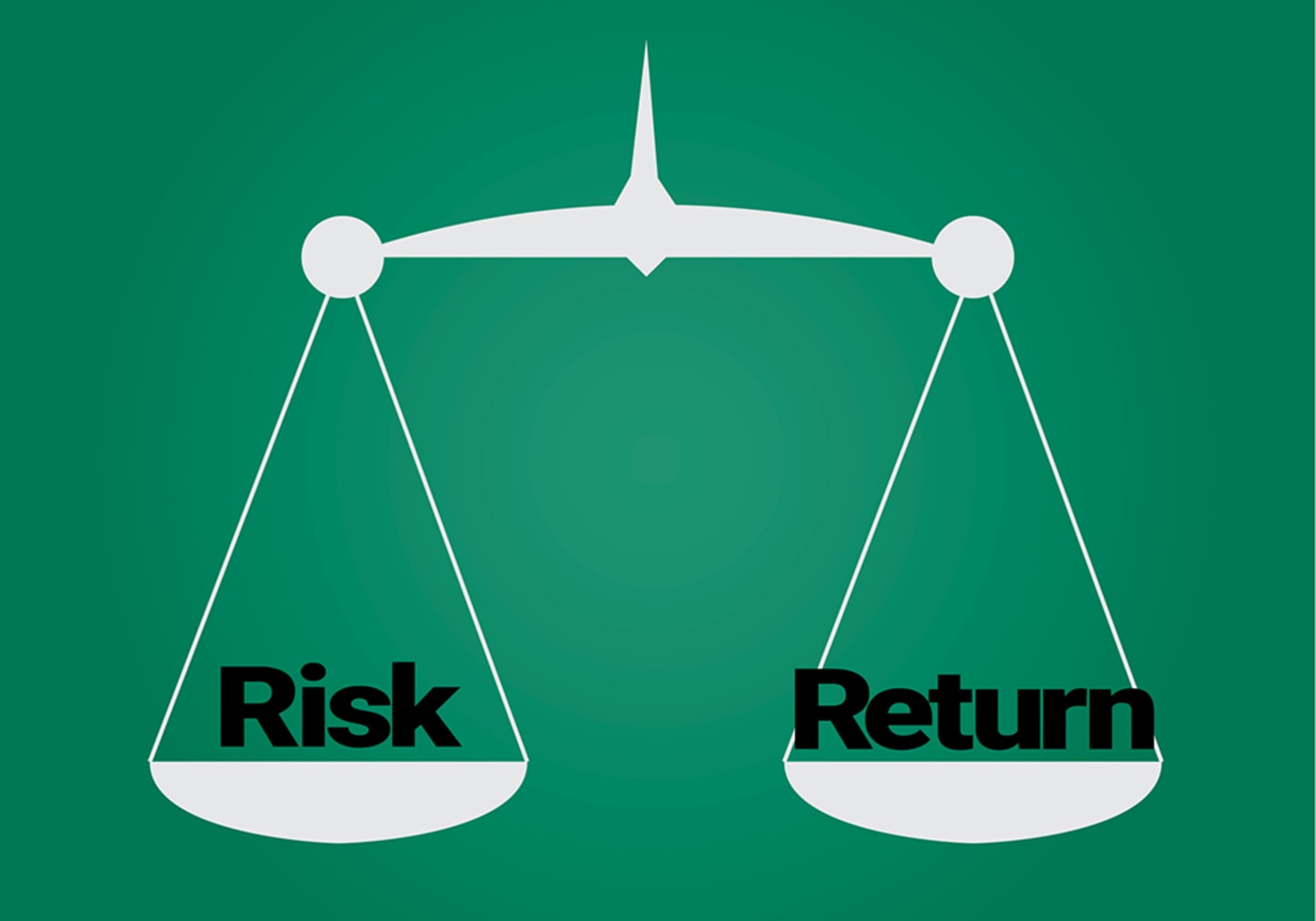Investing is never a 100% “sure thing,” and it shouldn’t be a trip to a Vegas casino, either. But just how much risk is acceptable depends in large part on the individual investor. If you’re a beginner, getting started with investing should include learning about the various types of risk and ways you may be able to manage them. Read on to find out about the risks of investing—knowing more about the risks may help you make investment choices suited to your goals.
Many Types of Risk
In investing, there’s some truth to the adage “high risk, high reward” and its inverse, too. Generally, the higher the risk level of an investment is, the greater the potential for a large return—as well as a sizable loss. The lower the risk, the lower the potential for a high return. (Of course, with any investment, there’s no guarantee of a positive return.)
There are risks associated with being too aggressive. But there are also risks related to being too timid in the market.
Here are some common missteps that can result from underestimating risk:
Falling behind inflation. Risk-averse investors may be tempted to invest solely in "safer" investments believed to have very low risk. However, doing so can result in a portfolio falling behind the rate of inflation—meaning your money might not grow enough to keep pace with rising costs of goods and services. That’s why it’s important to consider investments that can help you stay ahead of inflation.
Outliving your money. As investors move closer to retirement, longevity risk can come into play. Longevity risk is the chance that retirees haven’t saved up enough for retirement, effectively meaning that they outlive their money. Understanding risk early on, when you’re beginning to invest, could help you create an investment strategy that’s aggressive enough to help fully fund your retirement.
Investing for the future, relying solely on the past. While examining the historical returns of stocks and bonds can help inform investment decisions, remember that past performance doesn’t guarantee future gains. So, putting all your money into a single stock that soared once a decade ago is a high-risk proposition—that past peak doesn’t mean the stock will surge again.
Going high on risk when you’re low on time. Relying on a high-risk portfolio when nearing retirement age can make the risk even riskier. As investors get closer to retirement, they are more exposed to timing or “sequence” risk in market performance. With a high-risk portfolio close to retirement, a market downturn could lead to significant losses with little or no time for a recovery, which could derail retirement plans.
Balancing Risk Versus Reward
Investing means living with some level of risk. But there are ways to balance it out. When starting out with investing, remember that you don’t want to put all your eggs in one basket. In fact, by putting your eggs (money) into many baskets (investment types), you can strike a balance in your portfolio’s risk and reward potential.

Managing risk through broad diversification means that even if one investment fails, you may have other investments that are doing well to fall back on.
Diversification can mean investing in:
A mix of stocks and bonds and cash equivalents.
A combination of different countries, sectors, industries and securities within stocks and bonds.
Spreading out risk by diversifying doesn’t eliminate it. However, portfolios with different types of investments may fall less during a market downturn and recover sooner.
Risk Is Personal
While there’s always some risk in investing, individual investors can have vastly different feelings about risk. The resulting differences in their choices and decision-making can dramatically impact the risk they take on in their portfolios.
There are two personal characteristics that can dictate the amount of risk an investor chooses:
As previously explained, the closer a person is to retirement, the less risky investments should be. When young people are just learning how to invest, they may have riskier portfolios overall because they can benefit from time. Younger investors’ portfolios have time to potentially bounce back from a dip, whereas people who plan to retire in a few years don’t have time on their sides.
For some people, the idea of skydiving sounds fun. For others, it’s terrifying. If the thought of a very aggressive investment strategy keeps you awake at night, it could make sense to opt for a moderately aggressive strategy instead, for instance. We all have different tolerances for risk.
Discover more about your investing identity. Consulting a qualified financial advisor can help you take some of the emotion out of your investment decisions. That, in turn, may help you look at potential risks more objectively.
Understanding Risk: How to Start Investing for Beginners
Risk is an unavoidable part of investing. But, with the proper understanding of risk, and the right balance of high- and low-risk investments, investing can feel much more manageable, even for a beginner.
What’s more, with the right professionals at your side, you can work to create a personalized portfolio that works with your financial goals.
This material has been prepared for educational purposes only. It is not intended to provide, and should not be relied upon for, investment, accounting, legal or tax advice.
Investment return and principal value of security investments will fluctuate. The value at the time of redemption may be more or less than the original cost. Past performance is no guarantee of future results.
Diversification does not assure a profit nor does it protect against loss of principal.






